Inaccessibility is innately luxurious. To be hidden, obscured, or otherwise removed from easy sight and access is at once thrilling and serene. A child builds a fort in the woods or a castle from blankets beneath the dining-room table for all the same reasons a wealthy scion purchases a helicopter-access-only wilderness estate. And both of these have a great deal in common with the hermit’s crude shanty and the enduring appeal of the firetower watchman’s job on a mountain peak. Perhaps it is a hallmark of being human to wish to abscond and to hide, and to produce ‘hideouts’ in the nooks and crannies of remote or overlooked territories. Such places guide their occupants to a sense of peace or safety — a security in hidden-ness that silently implies that the wide world is somehow worth hiding from. Perhaps we are all Hobbesians after all; knowing in our heart-of-hearts that life in the public eye will only exhaust us in the end — that the war of all-against-all is not really worth fighting.

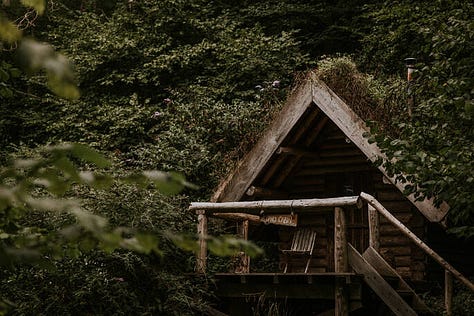
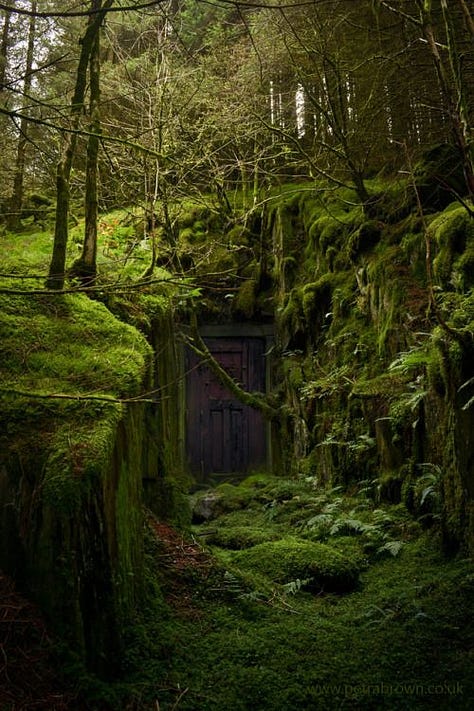
Perhaps, then, this is why whenever I write about “illegal cabins” in the eastern woodlands, my posts generate a lot of interest. The appeal of a slight and unknown abode hidden in tracts of severe terrain and deep forestlands is probably universal — it is at a minimum extremely American. The forerunners of the American nation were so often running from something and hoping to ‘hide out’ that perhaps this urge is biologically innate in the great majority of us; even if we ourselves are not hiding, merely contemplating the idea of inaccessible havens is a delicacy that tickles something primordial. And the pinnacle fulfillment of this desire might be found in the illicit forest cabin, hidden by so many spruces and firs, high atop death-defying cliffs and canyons or in a bitterly lonesome larch swamp.
Interestingly, I do not get the sense that the thousands of people to whom the illegal cabin has enduring appeal are actually fixing to go out and build one. Instead, the notion that such a thing is still possible comes as a relief. For citizens ensnared in bills and time-slips and auto mechanic bills and taxes, the mere theoretical possibility of freedom is thrilling to behold and consider. This may be because it allows one to exercise a stream of thoughts that are so often forbidden — thoughts about the sad state of our world, the absence of real liberty in spite of our lip service to it, and of the litany of obstacles to the free man that have emerged in the modern era. To contemplate an imaginary-yet-actually-plausible hidden forest hooch is to allow ourselves to think of these issues without giving them a name or distilling them into exhausting political grievances. In reading about illegal cabins, we enter an “illegal cabin of the mind” — a place to find deep rest and to restore our connection to the American mythos.
Yet there are a few hearty souls to whom the desire to actually build such a place looms large in their hearts, and they may actually do it. What I am writing here is for them. For it is still readily plausible — perhaps even moreso than in previous eras. As the populace of the American countryside ages and departs for cities and Floridian estates, the decreptitude of our hinterlands comes as a boon to the would-be penniless cabinwright. Moreover, a number of digital tools are his loyal friend — tools that show property lines and topography with ever-greater ease that would make the squatters of former days envious. And a simple perusal of land mapping tools tells a story of a rural landscape that has been carved-up, sold out, and is now often enough owned by out-of-state developers or trapped in unsettled estates to heirs that have long-since moved away. Some are even legally abandoned, the parcels failing to go to tax auction after years of nonpayment decades ago. Some land sits in bureaucratic limbo, and some world-class cabin sites sit at the confluence of un-surveyed lot lines in regions so remote human beings seldom — if ever — go.
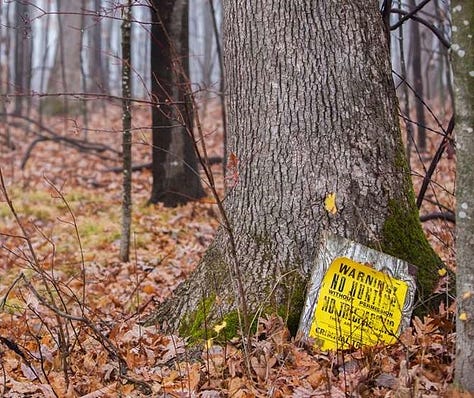
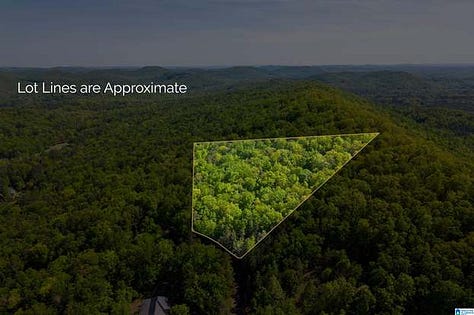
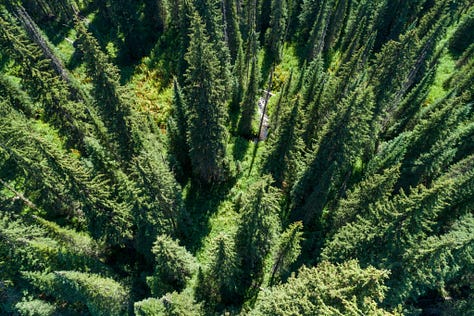
The general principle of siting a clandestine shack is the same principle that governs ‘stealth camping’ merely taken to a higher level. As a rule, the capacity of both landowners and law enforcement to detect and evict squatters can be mapped in terms of time and space. The stealth camper exploits the time-space gap in enforcement on a nightly basis — the illegal cabin dweller, by contrast, exploits the same gap in terms of years. While in general, the higher the degree of certainty that you will not be discovered for many years, the more physically inaccessible the location — the smart cabin-builder seeks the exceptions to that rule, favoring the rare and obscure areas where ease of access is high, but likelihood of detection is low.
Because of the immense breadth of this topic, I’ve opted to make it into a weekly series on the granular details of how to site a cabin both in legal and physical terms, various building methods, means for constructing hidden trails, and transporting both building materials and routine supplies to and from the cabin site. The timing of this endeavor coincides with a period during which I will build my own hidden cabin — and while for the sake of my own peace I will not divulge details as to its location, I will write about its construction and siting as best as I can while remaining covert.
As I launch this winterlong effort, I will take the opportunity to state that I am only eighty paid subscribers away from being able to write full-time. As my enlistment in the military ends, those who’ve opted to make a monthly contribution have bolstered my confidence that I can write for a living. I thank my paid subscribers immensely, and exhort those who’ve any confidence in my projects here to consider a paid subscription.
Watch for installments of this series every Wednesday at 6am. Til then, God bless.

